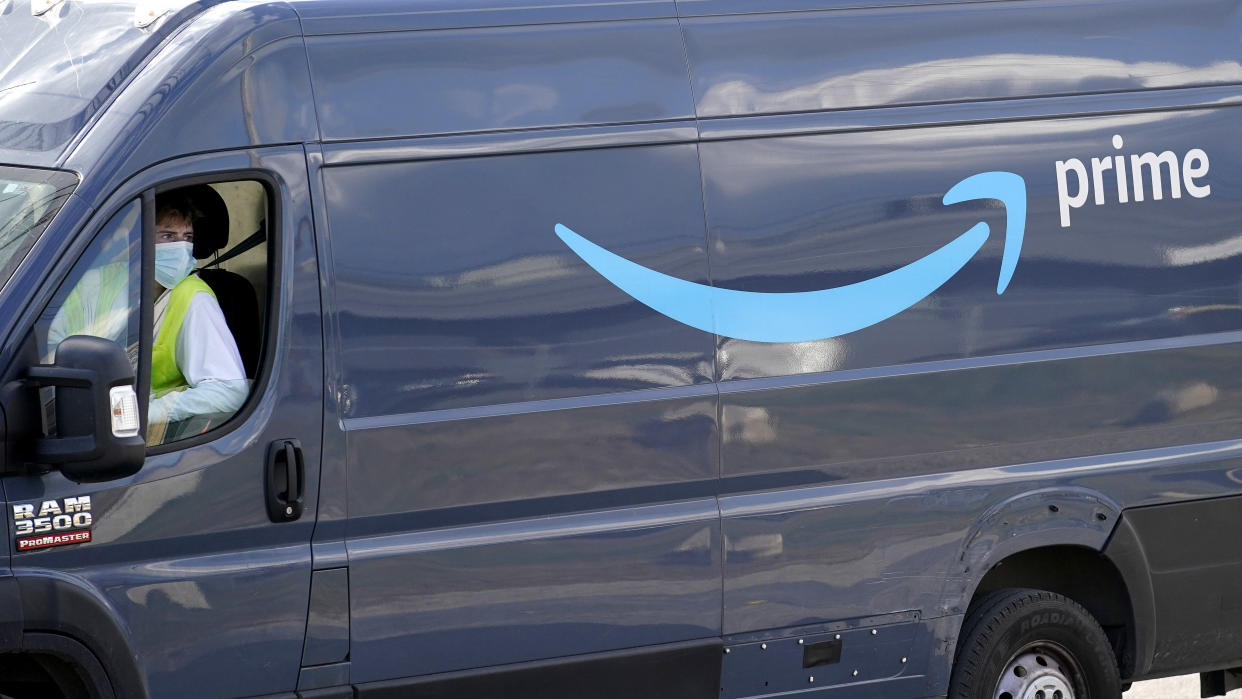Amazon Q3 Sails Past Expectations, Revenues Jump 37%

If there’s one thing that Amazon’s third-quarter earnings emphasized, it’s that the coronavirus hasn’t hit all retailers the same way. The e-tail giant has been on a tear in 2020, and even for analysts projecting big results in the third quarter, the final numbers likely dropped plenty of jaws.
The results beat estimates at every point, with 37 percent growth in revenue and earnings per share that sailed over expectations, driven largely by its e-commerce business.
Over the three-month period ending Sept. 30, the company pulled in revenues of $96.1 billion. Net income came in at $6.3 billion, or $12.37 a share, effectively tripling the $2.1 billion, or $4.23 EPS, it pulled in at this time last year.
Analysts projected $92.71 billion in revenues and EPS of $7.41.
Chief executive officer Jeff Bezos’ explanation in a statement said, ”We’re seeing more customers than ever shopping early for their holiday gifts, which is just one of the signs that this is going to be an unprecedented holiday season.”
The coronavirus pandemic has effectively stifled physical shopping, sending floods of consumers online, heightening e-commerce, mobile and social commerce activity and setting off a frenzy of development looking to cement these behaviors.
Perhaps what’s most notable is that the third-quarter figures don’t even include Prime Day sales. Amazon postponed its annual shopping event from July to October, and then immediately followed up with a Holiday Dash sale that sent consumers — including more than 150 million Prime subscribers — into early buying for the peak season.
“Amazon generated explosive sales growth during Q3 despite the lack of Prime Day, making year-over-year comparisons murky. However, we note that North America retail revenues were up 8 percent over second-quarter 2020, and margins actually improved around 10 [basis points], which is impressive given the increased costs involved in generating these revenues,” stated Charlie O-Shea, Moody’s vice president and retail analyst.
“More specifically, shipping costs jumped by $1.4 billion from [the second quarter], and over $5 billion year-over-year, with [third-quarter] 2019 including Prime Day, and [third-quarter] 2020 shipping as a percentage of retail sales climbing to almost 18 percent,” he said.
That gives Amazon plenty of reason to believe that the fourth quarter — which will include Prime Day results — will be unparalleled.
On the earnings call Thursday, Brian Olsavsky, chief financial officer, noted that third-party sellers performed strongly during Prime Day. These merchants, comprising mostly of small and medium-sized businesses, “thrived on Prime Day, with third-party sellers recognizing more than $3.5 billion in sales of the today global event,” he said.
The company is “investing heavily” to support third-party sellers in general, Olsavsky continued, reporting that more than half-a-million sellers are seeing record sales in Amazon stores this year.
The fourth quarter is expected to see a significant ramp-up across the e-commerce sector. Adobe expects e-commerce to reach $189 billion over the holidays, for a 33 percent year-over-year jump, while Shopify reported that 97 percent of Black Friday/Cyber Monday shoppers in the U.S. are planning to shop online that weekend.
If Amazon’s fourth-quarter revenue guidance is to be believed, the company will claim a massive segment of that activity: For the next quarter, Amazon guidance ranged from $112 billion to $121 billion, treating analyst expectations of $112.7 billion as a floor or minimum.
According to Episerver, a digital experience and commerce solutions company, Amazon will claim an increasingly larger share of the holiday market, with 11 percent of consumers planning to purchase all of their holiday gifts through its marketplace this year. And customer experience platform Iterable reports that 35 percent of consumers say they plan to shop Amazon this season more than in previous years.
That may bode well for its bottom line, but Amazon warned that fourth-quarter operating profits will probably take a hit due to COVID-19-related expenses, estimating them at $4 billion. That’s expected to send the company’s operating profits down to between $1 billion and $4.5 billion, missing projections of $5.81 billion.
Elsewhere in the Amazon empire, its cloud business managed to land at roughly where analysts expected, with Amazon Web Services counting $11.6 billion in sales. Its “other” segment — which includes Amazon’s ad business — drew $5.4 billion in sales, a leap of 51 percent year-over-year.
There was at least one part of the report that brought the challenges of the pandemic a little closer to the tech giant: Like most brick-and-mortar shops, sales at its physical stores fell 10 percent to $3.78 billion.
In other comments, Bezos highlighted that Amazon raised its minimum wage to $15 across the U.S. two years ago, and noted that it created more than 400,000 jobs this year. Amazon’s total workforce now breaks the 1 million threshold, sitting at 1.13 million, for growth of 50 percent over last year.
“We continue to focus on stepped-up employee safety, particularly in our fulfillment and logistics operations, to help ensure the safety and well-being of our employees and partners, as well as the employees and customers shopping in our Whole Foods Market and other stores,” Olsavsky said.
According to Amazon, engagement is going up and it’s seeing that people are “buying more frequently and across more categories,” added the finance executive, and it’s leveraging its digital benefits, which include Prime Video and other online services. “We think that’ll have lasting value.”
Amazon’s results were part of a rush of aftermarket earnings reports Thursday that showed big tech is an economic force to be reckoned with, despite the pandemic (and even if the key players are increasingly coming under the antitrust microscope).
• Google-parent Alphabet drove quarterly revenues up 14 percent to $46.2 billion.
• Facebook’s revenues increased 22 percent to $21.2 billion.
• And Apple’s top line inched up 1 percent to $64.7 billion and the company sounded bullish in notes on new products.
Sign up for WWD's Newsletter. For the latest news, follow us on Twitter, Facebook, and Instagram.


